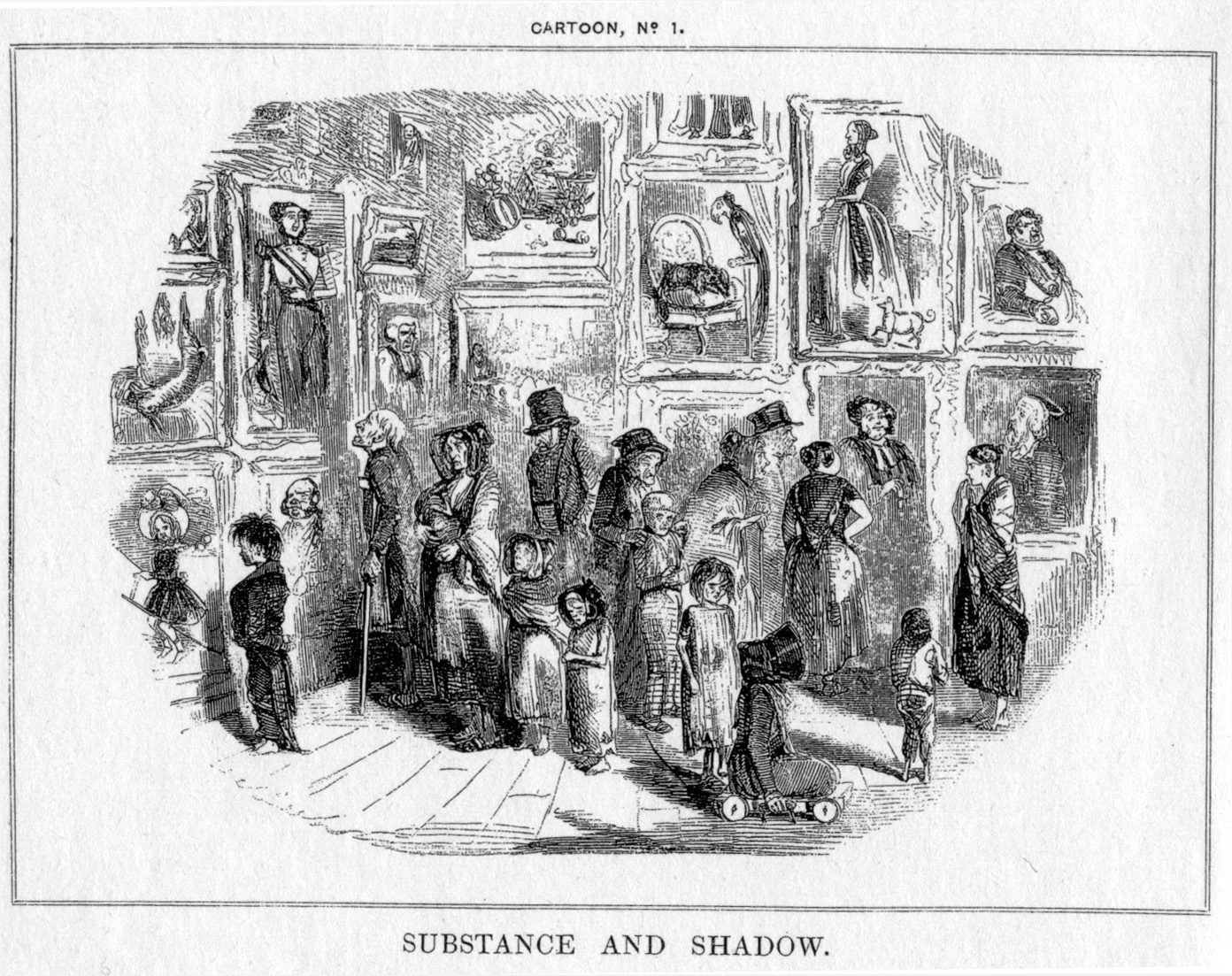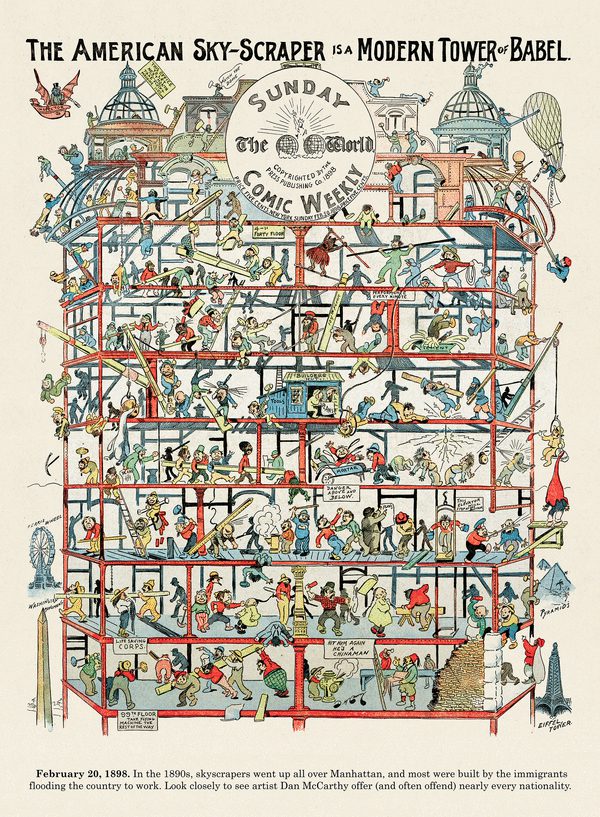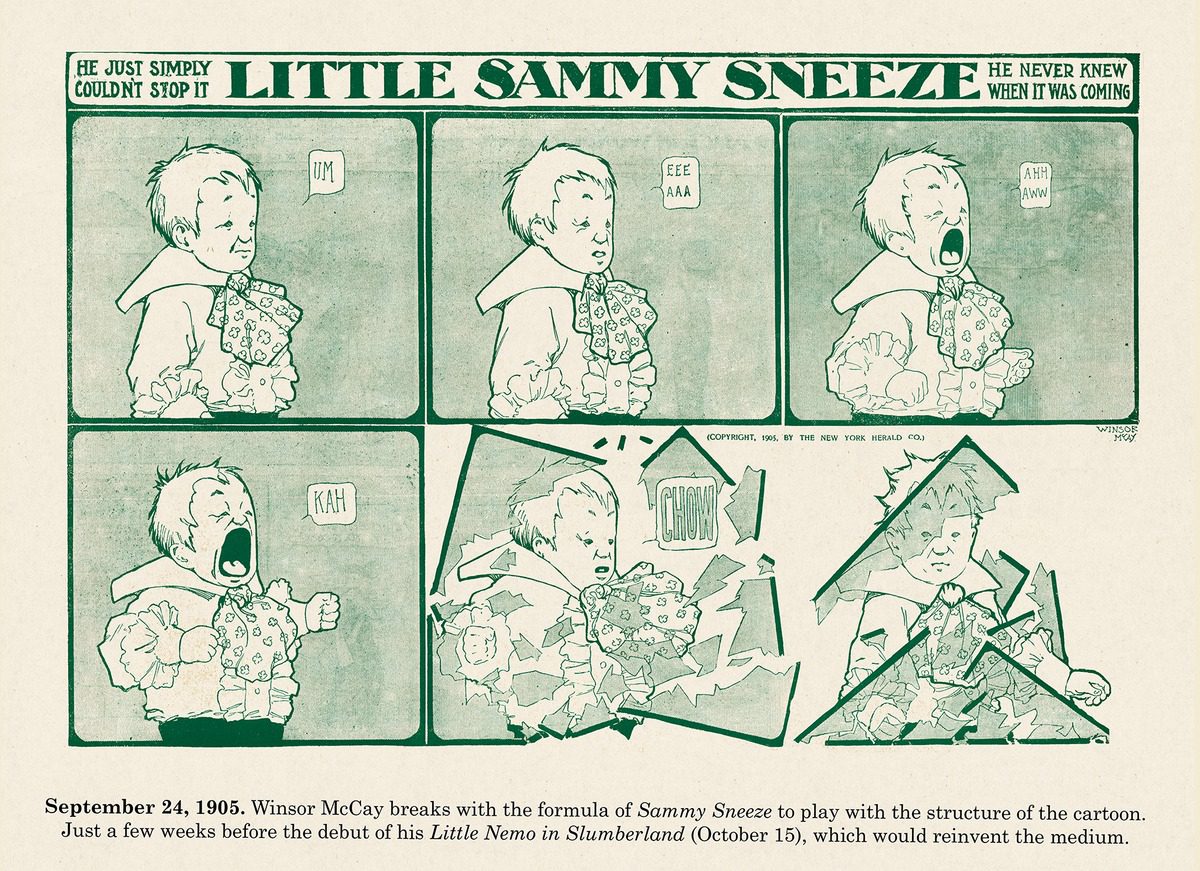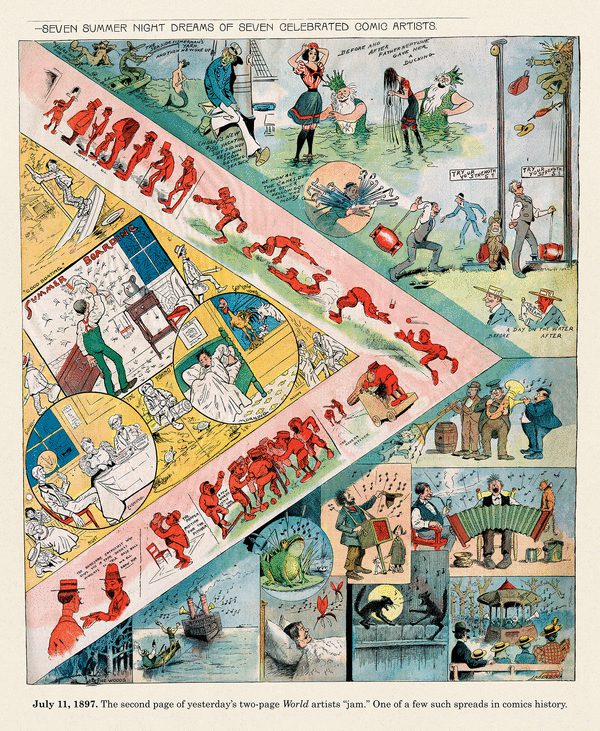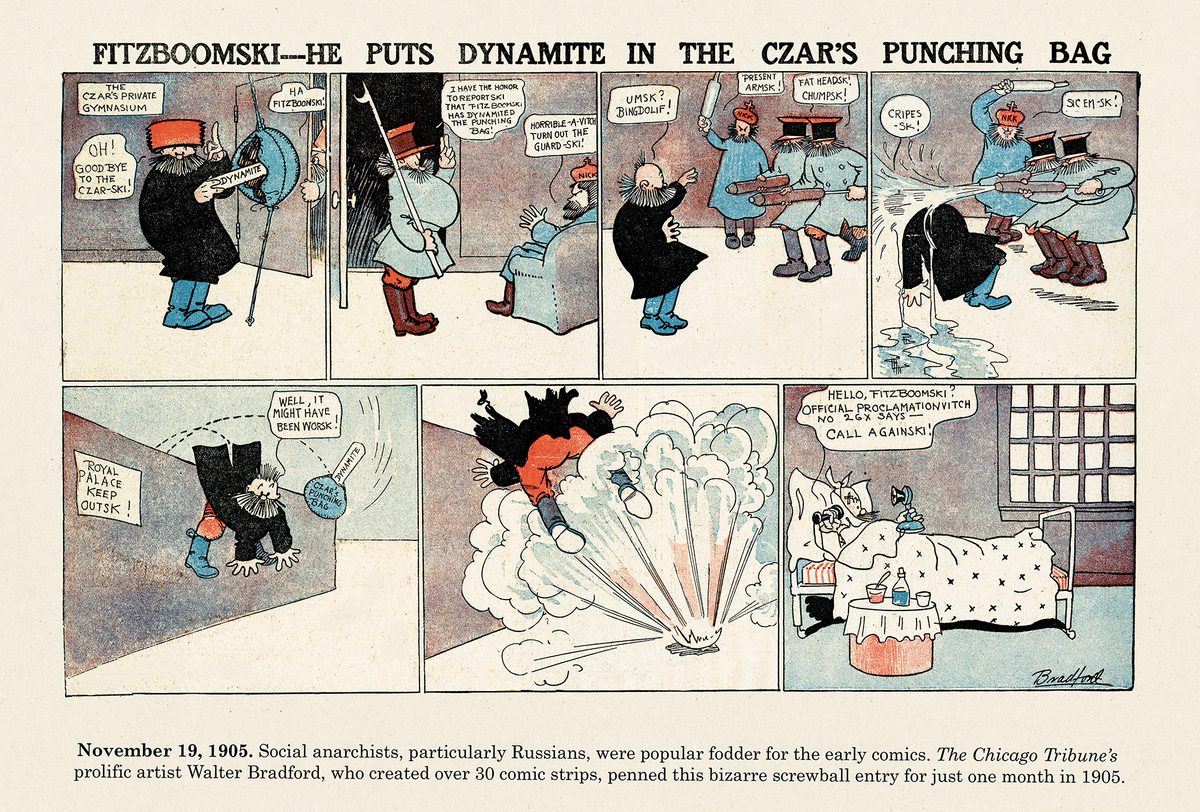The New York Comics & Picture-Story Symposium is a weekly forum for discussing the tradition and future of text/image work. Open to the public, it meets Tuesday nights 7-9 p.m. EST in New York City.Presentations vary weekly and include everything from historical topics and technical demonstrations to creators presenting their work. Check out upcoming meetings here.
The New York Comics & Picture-Story Symposium is a weekly forum for discussing the tradition and future of text/image work. Open to the public, it meets Tuesday nights 7-9 p.m. EST in New York City. Presentations vary weekly and include everything from historical topics and technical demonstrations to creators presenting their work. Check out upcoming meetings here.
*
It was a full house on the evening of December 9th. It was the 111th meeting of the New York Comics & Picture-Story Symposium. None of us 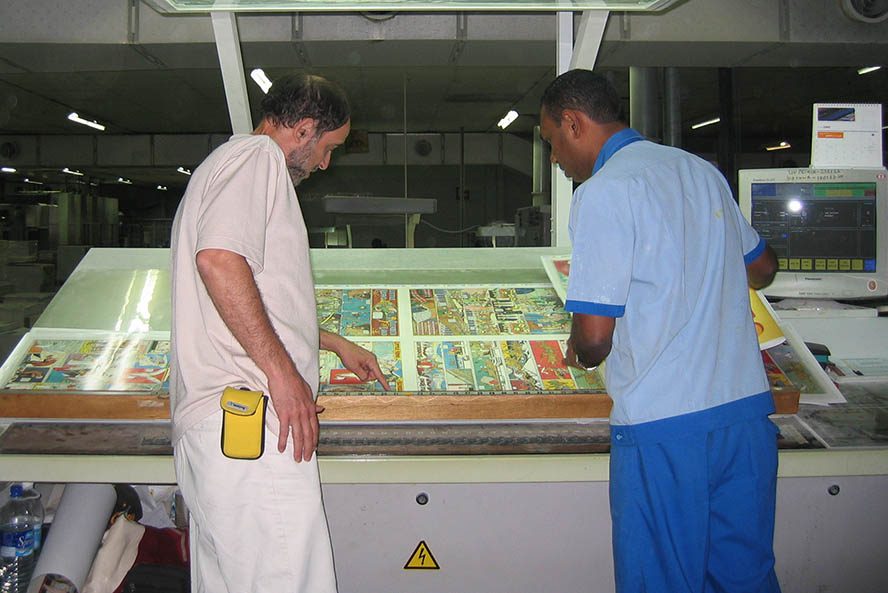 knew it at the time, but as we filed into the Bark Room at Parsons The New School, Peter Maresca was putting the finishing touches on a presentation that was about to transform us all into Sunday Comics fanatics.
knew it at the time, but as we filed into the Bark Room at Parsons The New School, Peter Maresca was putting the finishing touches on a presentation that was about to transform us all into Sunday Comics fanatics.
Artists & Anarchy: Origins of the Sunday Comics—Maresca’s presentation title—was loosely based on the content from his most recent publication, Society Is Nix: Gleeful Anarchy at the Dawn of the American Comic Strip (2013). This and eight other gloriously and meticulously reproduced comics anthologies represent the stable of works from Sunday Press, an alternative publishing house founded by Maresca in 2005.
I.
Most of the Bark Room crowd seemed to have a firm grasp of Sunday Comics history upon entry that evening. But when Maresca began “at the beginning” he didn’t start in America with the anticipated Yellow Kid of Hogan’s Alley. He started with the Swiss cartoonist, Rodolphe Töpffer, and a Parisian color press.
The significance of Töpffer is found at the top of his illustration, Substance and Shadow, printed in Punch Magazine in 1843. Punch was the 19th-century British equivalent of Mad Magazine. The caption reads, “Cartoon No.1.” With this illustration and this caption began the modern usage of the term “cartoon.” And cartoons, as we know, are the predecessor to comics.
Then, some fifty years later, a Chicago-based publisher traveled to Paris and visited the offices of Le Petit Journal. There, he laid eyes on the first full-color printing press. A year later, that publisher had a color press of his own and ran full-color cartoons and comics in the Chicago Inter Ocean.
Soon after, Joseph Pulitzer introduced a four-color press to his prominent newspaper, The New York World, and that is when The Yellow Kid made its debut in 1895.
Among Pulitzer’s contributions to Sunday Comics history was his vision and implementation of a weekly comics section. That, and the fervor surrounding the ongoing feud1 between Pulitzer and William Randolph Hearst, introduced an era of public enthusiasm for the serial drama of the Sunday Comics.
II.
At this point in the presentation people had physically started to lean in. There were openly audible “oohs” and “aahs” in response to many of the comic images shining back at us through the projector. Cliched sounds, perhaps, but a reality nonetheless.
Maresca continued by articulating some of the themes within what he calls the “Gleeful Anarchy” of the times. “Jam” cartooning was a popular mash-up technique in which several cartoonists would take part. These composite drawings would often feature characters from several different comic strips. The effect was an overlapping or “hacking” of the fictional worlds described within each participating comic. The contemporary TV equivalent might be something like Leslie Knope from the sitcom Parks and Recreation and Olivia Pope from Scandal appearing in character in an episode of The Vampire Diaries. Yikes.
In general, the early Sunday Comics were playful—the word “shenanigan” comes to mind when one thinks of the comic strips Hogan’s Alley and the Katzenjammer Kids. Although lighthearted, those comics also had a strong anti-authoritarian vibe. The characters were always doing things they shouldn’t be doing. Sometimes they got caught, but even when they didn’t they made people laugh. And laughter has the power to disarm a perceived authority no matter what a story’s outcome.
Disorder and chaos painted the scenes of many a Sunday Comic. In The Modern Skyscraper is a Modern Tower of Babel by Dan McCarthy, there is a (casually demeaning) representation of nearly every immigrant group participating in a tizzy of accident-prone construction methods. These were the days of large and overlapping immigrant communities, rapid technological advances, massive building projects, and a corrupt political system. Things were moving fast and if comics are any insight to the social psychology of the times, then we know it was more than dizzying.
Explosions plaster the landscape of so many early comic strips. Fires do, too. Even the sneeze that characterizes every single installment of the popular Little Sammy Sneeze is a kind of biological explosion—something out of our control, with sometimes wild, yet cathartic, results.
The dream sequences of comics like Little Nemo and Professor Otto’s New Year’s Resolution described alternate states of reality wherein the “undoable” or “unthinkable” became possible. The constraints of consciousness or social convention were challenged through these visualizations. Infidelity was permissible, horses had wings, the moon could swallow you whole. This sub-genre of comic strips no doubt shared similar cultural influences that sparked the Surrealist art movement.
The layouts are perhaps the most innovative characteristic of early Sunday Comics. Not only did the collaborative technique of “Jam” cartoons inspire some fresh and original artwork, but the graphic freedoms of the individual comic artists pushed the envelope as well. At this point the medium was just developing and there really were no clear rules or guidelines. The artists embraced this freedom and played with technique and concept fluidly. There is a clear attempt to break down the fourth wall of the medium when Little Sammy Sneeze’s sneeze actually breaks the frame within which his sequence exists. In Sawdust Slim the character is able to rotate the comic panel simply by leaning his weight into it. The early days seemed joyously experimental, and far from the two-tier, eight-panel style that later defined “The Funnies.”
III.
Maresca’s presentation was able to transform us into Sunday Comics fanatics is because he made them accessible and relatable. He disabuses himself of the claim to “historianship” and he speaks candidly about the things he observes and cares about within the history of the Sunday Comics. That kind of openness is a portal of sorts, perhaps a more human one than is typical of historical analysis.
The history that was depicted for us was one of rambunctious and creative chaos. And though the meaning and relevance of the term “anarchy” has long been disputed and redefined, the meaning in this context—one that is an historical interpretation of a time we cannot know personally—seems to imply freedom. Even though the Sunday Comics were made largely by straight men with regular jobs—upright citizens of society, in other words—the content of the storytelling and the graphic rule-breaking suggests maybe not a lived anarchy, but a desire for it in smaller ways. Ways that won’t threaten your ability to feed your family and pay the rent. And that is also relatable.
IV.
Society Is Nix: Gleeful Anarchy at the Dawn of the American Comic Strip features R. F. Outcault, George McManus, Winsor McCay, Jimmy Swinnerton and George Herriman, and more than fifty other cartoonists and over 150 Sunday comics dating from 1895 to 1915. Each work has been digitally restored and printed in the original size, and most of them are now in print for the first time in over one hundred years.
1. Hearst stole many of the cartoonists from Pulitzer and brought them to the New York Journal, including Outcault, creator of The Yellow Kid. After that, people started using the term “Yellow Journalism.”↩
***
Photo of Peter Maresca and printing foreman checking the colors on “Little Nemo in Slumberland” © Peter Maresca. All other copyrights assumed to be in the public domain.
***
Peter Maresca is a lifelong collector of comic strips and owner of Sunday Press. He was a pioneer in digital entertainment when working for Apple and Macromedia in the 1980s and 90s. In 2003, frustrated by forcing comics onto small, monochromatic cell phone screens, he set out to create, on paper, full broadsheet-sized Sunday comics. His proposals were turned down by major publishers and thus he became an “accidental publisher,” producing his own reprint collections. The first was the original-size comic strip volume, Little Nemo in Slumberland, So Many Splendid Sundays, and Sunday Press was born. Nine books and 12 Will Eisner Award nominations later, Sunday Press has assembled the first full-size review of the earliest newspaper comics in Society is Nix, Gleeful Anarchy at the Dawn of the American Comic Strip.
***
About the Author: Monica Johnson is a comic artist and student debt activist living in Brooklyn, NY. She holds an MFA in Integrated Media Art from Hunter College. She self-publishes mini-comics through Wool & Brick Press, and is working on a graphic novel titled The Adventures of Dorrit Little, a tale of the average student debtor in the United States today.

